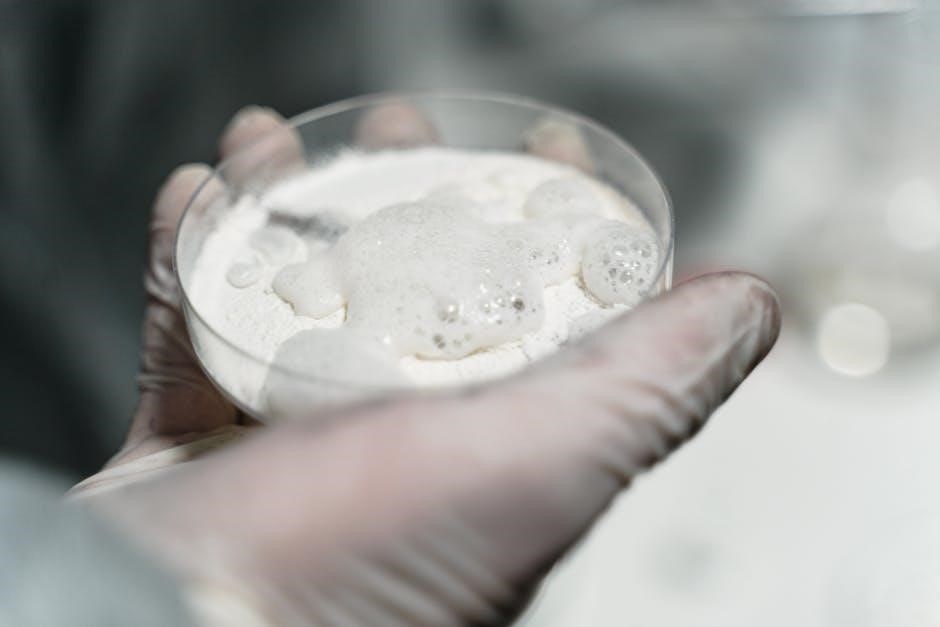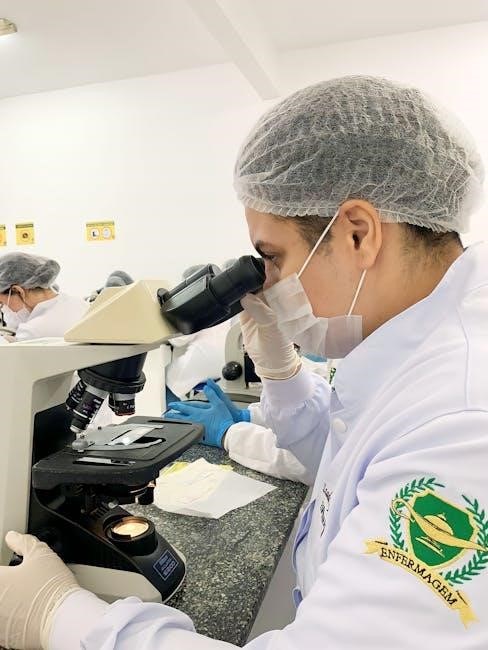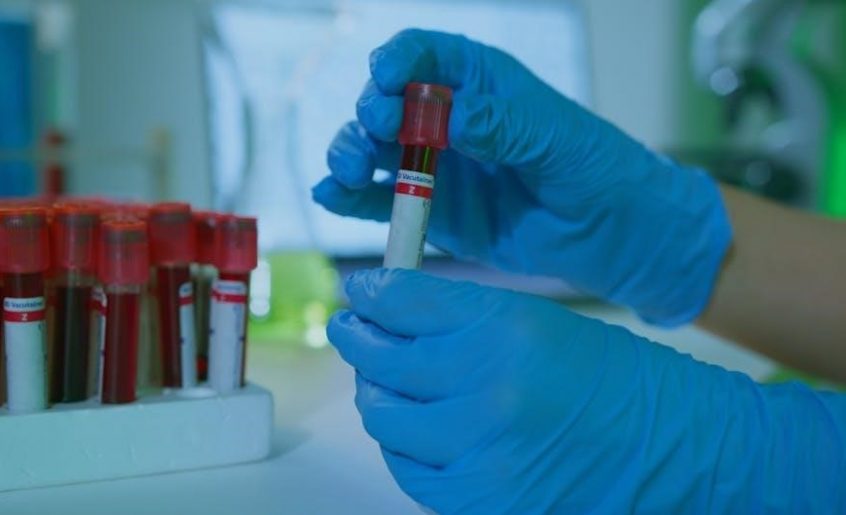Sterile Processing Technician study guides provide comprehensive resources for understanding key concepts, preparing for certifications, and mastering essential skills in sterilization and medical instrument management.
1.1 Importance of Study Guides for SPT Certification
Sterile Processing Technician study guides are essential for exam preparation, offering detailed insights into sterilization methods, equipment maintenance, and infection control. They cover key topics, ensuring a strong foundation for certification. These guides often include practice questions, helping candidates familiarize themselves with test formats and improve problem-solving skills. Regular use enhances comprehension, boosts confidence, and ensures readiness for the challenges of the SPT role.
1.2 Overview of the Sterile Processing Technician Role
Sterile Processing Technicians (SPTs) play a critical role in healthcare by ensuring medical instruments are properly sterilized and ready for use. They operate specialized equipment, follow strict safety protocols, and maintain detailed records. SPTs work in hospitals, clinics, or sterilization facilities, adhering to infection control standards. Their tasks include decontaminating instruments, packaging items for sterilization, and monitoring processes to ensure compliance. This role is essential for preventing infections and maintaining patient safety in healthcare settings.
Key Concepts and Principles in Sterile Processing
Key concepts in sterile processing include sterilization methods, decontamination processes, sterile packaging, and storage guidelines, ensuring safe and efficient medical instrument preparation.
2.1 Understanding Sterilization Methods
Sterilization methods are critical in eliminating microbial life. Common techniques include steam sterilization using autoclaves, which employs high-pressure steam, and chemical sterilization with ethylene oxide. Each method has specific applications, with steam being the most common due to its effectiveness and efficiency. Proper understanding ensures instruments are safe for use, preventing infections and maintaining patient safety. Technicians must master these methods to apply them correctly in various healthcare settings.
2.2 Decontamination and Cleaning Processes
Decontamination and cleaning are essential steps in sterile processing. Mechanical washers using impingement, a forceful water spray, are commonly employed. Enzymatic solutions break down organic matter, while ultrasonic cleaners remove stubborn contaminants. A one-way workflow ensures soiled instruments move through cleaning, disinfection, and sterilization without cross-contamination. Proper cleaning is critical for effective sterilization, as residual debris can hinder sterilization methods. Technicians must adhere to standardized protocols to ensure instruments are safe for patient use, maintaining strict infection control standards throughout the process.
2.3 Sterile Packaging and Storage Guidelines
Sterile packaging ensures instruments remain contamination-free until use. Materials like wrapped trays, peel pouches, and rigid containers are commonly used. Storage areas must maintain sterility, with controlled temperature and humidity levels. Instruments should be stored in clean, dry environments, away from chemicals or moisture. Proper labeling and dating are critical for tracking shelf life; Improper storage can compromise sterility, leading to patient safety risks. Guidelines emphasize maintaining integrity of packaged items to ensure safe and effective use in medical procedures.

Certifications for Sterile Processing Technicians
Certifications like CRCST and CSPDT validate expertise in sterilization processes, instrument preparation, and infection control, ensuring technicians meet industry standards for patient safety and equipment management.
3.1 Certified Registered Central Service Technician (CRCST)
The CRCST certification, offered by the Healthcare Sterile Processing Association (HSPA), validates a technician’s expertise in sterilization methods, instrument packaging, and infection control. It ensures proficiency in maintaining patient safety standards and operational efficiency. The exam covers key areas such as decontamination processes, sterilization techniques, and quality control measures. Achieving CRCST certification enhances career prospects and demonstrates a commitment to excellence in sterile processing; Study guides and practice exams are available to aid preparation for this critical credential.
3.2 Certified Sterile Processing and Distribution Technician (CSPDT)
The CSPDT certification, administered by the Certification Board for Sterile Processing and Distribution (CBSPD), focuses on sterile processing, distribution, and patient safety. It validates a technician’s ability to ensure the proper handling, sterilization, and distribution of medical instruments. The exam includes 150 multiple-choice questions, covering topics like sterilization methods, inventory management, and infection control. Earning this credential demonstrates expertise and commitment to maintaining high standards in healthcare facilities. Study guides and practice exams are essential for effective preparation.
3.3 Importance of Certification in the Field
Certification in sterile processing is crucial for demonstrating expertise and commitment to patient safety. It enhances credibility, ensures adherence to industry standards, and validates a technician’s ability to perform critical tasks effectively. Certified professionals often experience improved job prospects, higher salaries, and greater career advancement opportunities. Certification also reflects a deep understanding of infection control and sterilization practices, which are essential for maintaining high-quality healthcare outcomes. It underscores a technician’s dedication to continuous learning and professional growth in the field.
Study Materials and Resources
Essential study materials include official guides, practice exams, and technical manuals. Online resources like PDFs and training manuals provide comprehensive insights into sterilization techniques, safety protocols, and certification preparation.
4.1 Recommended Study Guides for SPT Exams
Recommended study guides for SPT exams include the Sterile Processing Technician Study Guide PDF, which covers essential topics like sterilization methods, decontamination, and equipment maintenance. These guides often feature practice questions, case studies, and detailed explanations to help candidates prepare effectively. Additionally, resources like the CRCST and CSPDT exam prep materials are highly recommended for their focus on certification-specific content. Utilizing these guides ensures a comprehensive understanding of sterile processing principles and practices.
4.2 Practice Questions and Exam Preparation Tips
Practice questions and exam preparation tips are crucial for SPT certification success. Utilize resources like Nimble Prep for free practice questions and CRCST exam guides. Focus on understanding answer formats and time management. Reviewing weak areas through flashcards and mock exams enhances readiness; Prioritize studying high-weight topics and familiarize yourself with common question types to improve confidence and performance on the actual exam.
4.3 Utilizing Online Resources for Effective Learning
Online resources are invaluable for SPT exam preparation. Platforms like Nimble Prep and Quizlet offer free practice questions and study guides. Access CBSPD and HSPA study materials for detailed insights. Utilize downloadable PDF guides, such as the Sterile Processing Technician Study Guide, for comprehensive review. Interactive tools like flashcards and video tutorials enhance learning. Regularly visiting websites like Docsity ensures access to updated exam prep materials, fostering a well-rounded understanding of key concepts and exam formats.

Technical Aspects of Sterile Processing
Understanding equipment maintenance, autoclave operations, and sterilization methods is crucial. Proper calibration and adhering to technical guidelines ensure effective sterilization and instrument longevity in healthcare settings.
5.1 Equipment Maintenance and Calibration
Regular maintenance and calibration of sterilization equipment are essential for ensuring effective sterilization. Technicians must follow manufacturer guidelines, perform routine cleaning, and verify proper function. Calibration ensures accurate temperature and pressure readings, critical for sterilization processes. Proper maintenance prevents equipment failure, ensuring consistent sterilization outcomes. Documentation of maintenance activities is required for quality control and compliance with industry standards. This ensures patient safety and maintains the integrity of sterile processing operations. Regular checks and timely repairs are vital for optimal equipment performance.
5.2 Understanding Autoclave Operations
Autoclave operations are central to sterilization processes, using high-pressure steam to eliminate microorganisms. Proper temperature and pressure parameters must be maintained, typically between 121°C to 134°C and 15-30 PSI. Cycles are timed to ensure thorough sterilization. Regular maintenance, including cleaning and calibration, is crucial for consistent results. Chemical indicators verify successful sterilization, while biological indicators confirm microbial elimination. Understanding autoclave mechanics and safety protocols ensures efficient and safe operation, preventing equipment damage and ensuring sterile outcomes for medical instruments and supplies.
5.3 Role of Chemical Indicators in Sterilization
Chemical indicators play a vital role in verifying sterilization processes. They provide visual confirmation that sterilizing conditions have been met. These indicators, placed inside sterilization pouches or equipment, change color when exposed to specific parameters like steam or temperature. They ensure each load meets sterilization standards, offering immediate feedback. Proper placement and interpretation are essential for accurate results, complementing biological indicators to ensure patient safety and instrument sterility in healthcare settings.

Safety Protocols in Sterile Processing
Safety protocols in sterile processing are critical to preventing contamination and ensuring a safe environment for both patients and staff. They include proper use of personal protective equipment, safe handling of hazardous materials, and emergency preparedness measures to maintain workplace safety and prevent infections.
6.1 Personal Protective Equipment (PPE) Usage
Personal Protective Equipment (PPE) is essential in sterile processing to protect technicians from exposure to infectious agents and hazardous materials. Common PPE includes gloves, masks, gowns, and eye protection. Proper PPE usage ensures workplace safety and prevents contamination. Technicians must wear appropriate PPE during decontamination, cleaning, and handling of medical instruments. Adherence to PPE guidelines is critical to maintaining a safe environment for both staff and patients, reducing the risk of infection and ensuring compliance with infection control standards.
6.2 Handling Hazardous Materials Safely
Handling hazardous materials in sterile processing requires strict adherence to safety protocols to minimize risks. Technicians must identify hazardous substances, use appropriate PPE, and follow proper handling techniques. Training on chemical safety and spill management is essential. Storage and disposal of hazardous materials must comply with regulatory guidelines to ensure a safe working environment and prevent accidents. Proper labeling and segregation of hazardous items are critical to maintaining safety standards and protecting both personnel and patients.
6.3 Emergency Procedures in Sterile Processing
Emergency procedures in sterile processing are critical to ensure safety and maintain workflow continuity. Fire evacuation plans, chemical spill protocols, and equipment failure responses must be well-documented and practiced. Technicians should be trained in first aid, fire extinguisher use, and proper incident reporting. Regular drills and updates to emergency protocols help prepare staff for unexpected situations. Swift, coordinated actions during emergencies minimize risks to personnel, patients, and sterile supply integrity, ensuring timely resolution and safe outcomes.
Professional Development and Continuing Education
Professional development and continuing education are vital for SPTs to stay updated with industry standards, maintain certifications, and adapt to new technologies and best practices in patient care.
7.1 Staying Updated with Industry Standards
Staying updated with industry standards is crucial for Sterile Processing Technicians. Regular updates ensure compliance with regulations and best practices. Technicians must familiarize themselves with new guidelines, such as updated sterilization methods or changes in infection control protocols. Continuous learning through workshops, webinars, and professional organizations helps technicians maintain proficiency. Additionally, reviewing industry publications and participating in training programs keeps their knowledge current, ensuring patient safety and optimal instrument processing.
7.2 Importance of Recertification
Recertification is essential for Sterile Processing Technicians to maintain their professional credentials. It ensures ongoing competence and adherence to evolving industry standards. Recertification typically involves completing continuing education requirements and passing periodic exams. This process updates technicians on new technologies, protocols, and safety measures, enhancing their ability to provide safe and effective sterilization services. Staying certified also boosts career opportunities and demonstrates a commitment to professional growth and patient safety.
7.3 Networking Opportunities in the Field
Networking is crucial for professional growth in sterile processing. Joining organizations like the Healthcare Sterile Processing Association (HSPA) or the Certification Board for Sterile Processing and Distribution (CBSPD) offers access to conferences, workshops, and forums. These platforms allow technicians to connect with peers, share best practices, and stay updated on industry advancements. Online communities and study groups also provide opportunities for collaboration and learning, fostering a supportive environment for career development and continuous improvement in the field.

Common Challenges in Sterile Processing
Sterile processing technicians face challenges like managing workloads, maintaining attention to detail, and adapting to new technologies, requiring continuous training and precision to ensure patient safety and equipment sterility.
8.1 Managing Workload and Time Efficiency
Efficiently managing workload and time is crucial in sterile processing. Technicians must prioritize tasks, such as decontamination and sterilization, while ensuring quality and safety. Proper organization and adherence to checklists help maintain productivity. Balancing multiple responsibilities without compromising attention to detail is essential. Training and familiarity with protocols enable technicians to streamline processes and adapt to unexpected demands. Effective time management prevents delays and ensures patient safety, making it a cornerstone of sterile processing operations.
8.2 Maintaining Attention to Detail
Maintaining attention to detail is critical in sterile processing to ensure patient safety and prevent contamination. Technicians must meticulously inspect instruments, verify sterilization parameters, and accurately document processes. Even minor oversights can lead to serious consequences, making vigilance essential. Regular training and checklists help reinforce detail-oriented practices. Consistency in adhering to protocols ensures high standards of quality and compliance, while minimizing errors in the sterilization and preparation of medical equipment.
8.3 Adapting to New Technologies and Techniques
Adapting to new technologies and techniques is essential for sterile processing technicians to remain effective. Advances in autoclave operations, chemical indicators, and packaging methods require continuous learning. Technicians must stay updated on industry standards and innovations, such as automated sterilization systems and improved cleaning agents; Engaging in professional development and utilizing study guides can help bridge knowledge gaps. Embracing new tools and protocols ensures efficient, safe, and high-quality sterilization practices, aligning with evolving healthcare demands and enhancing patient safety.
The sterile processing technician role is vital for patient safety. Study guides and practice exams are essential for mastering sterilization techniques and adapting to new technologies effectively.
9.1 Final Tips for Success in Sterile Processing
Mastering sterilization methods and understanding guidelines is crucial. Leverage study guides and practice exams to reinforce knowledge. Regularly review technical manuals and attend workshops. Pay attention to detail in cleaning and packaging processes. Stay updated on industry standards and adapt to new technologies. Continuous learning and certification renewal are essential for long-term success in this critical healthcare role.
9.2 The Future of Sterile Processing Technician Roles
The demand for skilled sterile processing technicians is growing, driven by advancements in medical technology and increased focus on patient safety. Future roles will emphasize automation, advanced sterilization methods, and infection control. Technicians must adapt to new technologies and protocols while maintaining high standards of precision. Continuous education and certification will remain critical as the field evolves. The integration of digital tools and data analytics will further enhance efficiency and accuracy in sterile processing environments.
